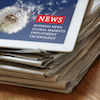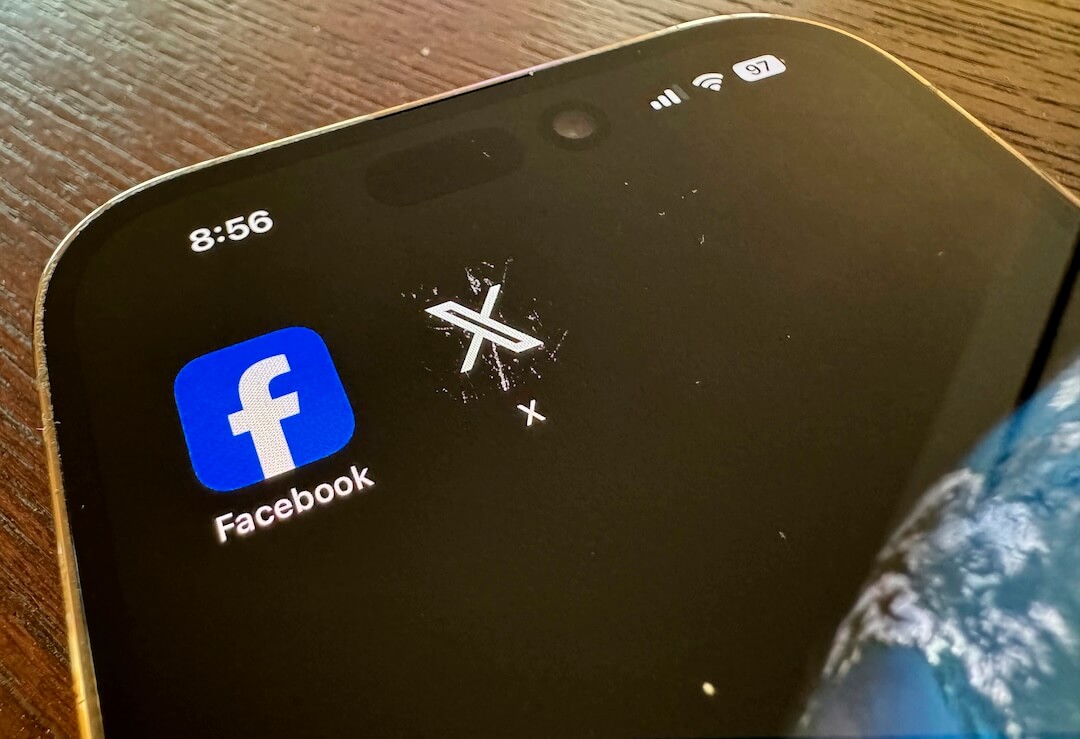Digital First Media has unveiled plans to transform its newsrooms and put its money where its name is. “Project Unbolt” aims to address the problem of digital efforts at the mercy of existing newspaper infrastructure.
The first of Digital First’s 75 daily newspapers to get the unbolting is the New Haven (Conn.) Register, where digital transformation editor Steve Buttry will lead efforts to rearrange and reimagine the newsroom’s workflow, culture and structure. He’ll also work closely with three other local papers — The (Willoughby, Ohio) News-Herald, The El Paso Times and The (Pittsfield, Mass.) Berkshire Eagle — for the pilot program.
The project’s name comes from Digital First Media CEO John Paton’s observation that the company’s newsrooms are print operations with digital “bolted on” — remarks that rang true but stung, Buttry wrote on his blog.
“It’s a little uncomfortable for people who rightfully think they have been working their asses off to be digital-first,” Buttry told me via phone. Indeed, it’s not as if Digital First newspapers have been ignoring digital to this point — the New Haven Register posts breaking news throughout the day and has a mobile website. But at many of these “newspaper factories,” as Buttry calls traditional newsrooms, it’s still often newspaper-style stories that end up on the web.
Newspapers have become comfortable publishing content online before it runs in print, but the nature of that content has been influenced by newspaper thinking throughout the planning, reporting, writing and editing process. So Project Unbolt is about going beyond publishing content first on digital; it’s about publishing content first on digital in a digital-native way.
Ways to follow updates on @digitalfirst‘s Project Unbolt: 1. http://t.co/Ps8AyViTI8 2. @stevebuttry, and his blog 3. #ProjectUnbolt
— Inside Thunderdome (@DFMThunderdome) January 30, 2014
Workflow and culture adjustments
Buttry says Digital First newspapers have performed well online in two related areas: live event coverage and breaking news (he pointed to the Denver Post’s Pulitzer-winning coverage of the Aurora movie theater shooting). That type of content is necessarily digital-first and makes for a natural place to begin weaning newsrooms off newspaper-first mindsets.
The bigger challenge: changing the thinking behind routine beat coverage and enterprise reporting.
For example, Buttry said a reporter on the education beat who is used to filing one story about test scores in the evening could instead write a quick four- or five-paragraph story in the morning when test scores are released and follow up multiple times during the day as she gathers reaction and context.
That already happens for some breaking stories at newspapers with daytime editors who continuously edit stories as they’re updated or just after they’re updated, Buttry said. But now it’s a priority to get all reporters to stop sitting on news until it’s fully developed, pristine and print-ready.
Major investigative or feature pieces present another dilemma: They usually run in the Sunday paper, Buttry said, when web traffic is sparse. Instead of Sunday features being the entire story, newspapers could publish elements of stories as they’re uncovered, which also offers more opportunities to crowdsource and include readers along the way. This thinking reflects the notion of news as a process rather than a product, as Jeff Jarvis (who serves on Digital First’s advisory board) puts it.
And then there’s the content itself in enterprise stories, which can be rethought as interactive databases online or as series of video pieces.
It all sounds like a lot of work — work that might require more staffers, I told Buttry. “More staff would be great, but the economic realities are the economic realities,” he replied. “Unbolting is going to be with the staff we have now. If the economic performance isn’t good enough to keep maintaining that, unbolting won’t save us from staff cuts.”
So while an iterative, multimedia-focused reporting process doesn’t necessarily require more reporters and editors, it’ll likely require disruptions to the workflow and duties that staffers are used to. Maybe top city editors end up working more day shifts instead of night shifts, or reporters take on more multimedia duties.
Meanwhile, there’s also the matter of convincing grizzled reporters and editors of the merits of blogging and engaging on social media. But Buttry said Digital First journalists are mostly excited for the changes.
“I’m not gonna say there’s not gonna be any pushback or learning curve,” Buttry said. “But I don’t hear so many resisting, curmudgeonly, ‘you can’t make me change’ reactions anymore. I hear learning-curve types of questions.”
What about print?
Despite Paton’s aggressive investment in digital, he acknowledges print isn’t disappearing tomorrow: “Whatever life there is in print — and, of course, there is some and it must be preserved just as it must also be used to fuel our investments in our digital future,” he said in a presentation to the Online Publishers Association posted on his blog.
Said Buttry regarding Project Unbolt: “We may not serve our print readers as well as we used to, and as somebody who loves print, I’m sorry about that.”
Yet print will remain a concern, but one bolted on to digital efforts rather than vice versa. One of the newsroom “pods” will still be devoted to putting together the print newspaper, but meetings won’t revolve around page one. And the print folks might see new duties — including a throwback to a process Buttry was responsible for earlier in his career: “If stories are written in an iterative fashion for digital products, but there’s not a one-take, start-to-finish story as part of the digital product, there could be a return to a rewrite desk or editor,” he said.
And when it comes to those Sunday enterprise stories, editors will likely have the job of gathering previously published digital content into a form that works in print. By then, Buttry said, it might be old news “but not if it’s the only thing you read.”
“The audience, God bless them, are creatures of habit, and we want that habit,” Buttry said. “And as long as it’s economically feasible to feed that habit, we intend to do that.”
So while there’s no intention to abandon print altogether, Digital First certainly seems unafraid to absorb some losses in print if it enables the company to better prepare itself for success in a post-print world.







Comments